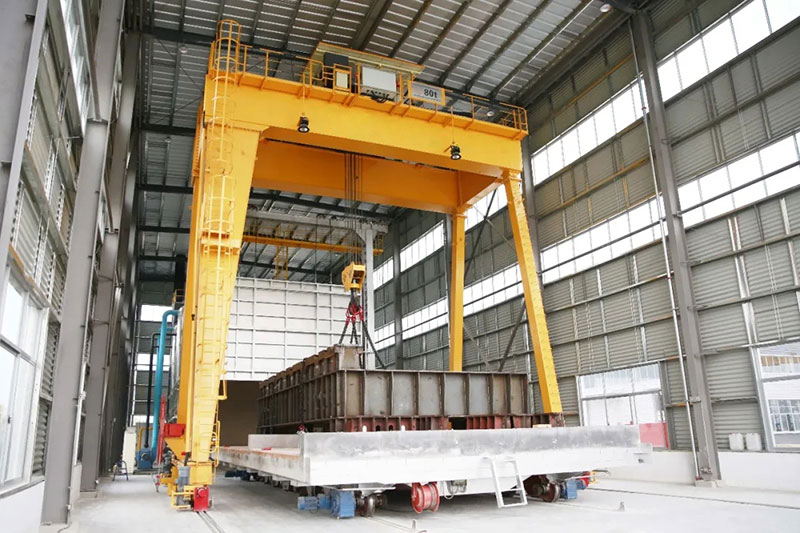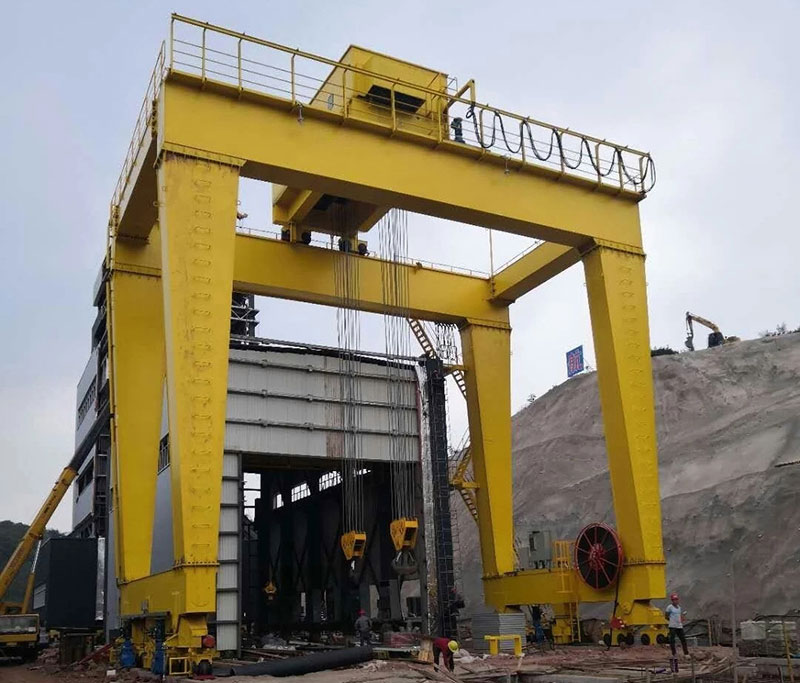Material handling plays a crucial role in heavy industries, and cranes are the backbone of efficient lifting and transportation of loads. Among the most popular cranes used in industrial and construction settings are Goliath cranes and gantry cranes. While these two types of cranes may appear similar in many respects, they have distinct differences in structure, application, and benefits. In this article, we will explore the key differences between Goliath cranes and gantry cranes and highlight the advantages each one brings to various industries.

1. Understanding Goliath Cranes
A Goliath crane, also known as a portal crane, is a type of overhead crane that consists of a horizontal beam (girder) supported by two legs that move on fixed rails embedded in the ground. Unlike traditional overhead cranes, which are mounted on the structure of a building or bridge, Goliath gantry cranes operate independently from the building’s infrastructure, making them ideal for outdoor applications or where overhead crane installation is not feasible.
Key Features of Goliath Cranes:
- Self-Supporting Structure: Goliath cranes do not rely on existing structures for support. They are mounted on tracks at ground level, with two or more legs providing support for the horizontal beam.
- Large Span Coverage: Goliath cranes can have a large span, allowing them to cover vast areas such as shipyards, steel mills, and container terminals.
- High Load Capacity: These cranes are designed for lifting heavy loads, with capacities often reaching up to hundreds of tons.
- Flexible Installation: Goliath cranes can be installed outdoors or indoors, offering flexible applications across different industries.
2. Understanding Gantry Cranes
Gantry cranes are a broad category of cranes that are similar in design to Goliath cranes, featuring a horizontal beam supported by legs that move along tracks or wheels. However, Aicrane gantry cranes can vary greatly in size and application, ranging from small, portable models used in workshops to large industrial versions for heavy-duty applications.
Key Features of Gantry Cranes:
- Versatility: Gantry cranes come in many shapes and sizes, from small gantry cranes used for light lifting to massive industrial gantry cranes used for handling containers or large equipment.
- Different Configurations: Gantry cranes can have single or double girders, depending on the load and operational requirements.
- Portability: Some gantry cranes are mobile, equipped with wheels or tracks, allowing them to be moved around work sites without the need for fixed rails.
- Indoor and Outdoor Applications: Gantry cranes can be used indoors in warehouses or workshops, as well as outdoors in shipyards or construction sites.

3. Key Differences Between Goliath Cranes and Gantry Cranes
Despite their similar appearance and shared purpose of lifting and moving loads, Goliath cranes and gantry cranes have several differences in terms of structure, application, and operation.
3.1. Structure and Design
One of the most significant differences between Goliath cranes and gantry cranes is the design of their supporting structure. Goliath cranes typically have two or more legs that move on rails embedded in the ground, while gantry cranes can have fixed or movable legs that may or may not be rail-mounted.
- Goliath Crane: The legs of a Goliath crane are firmly anchored to rails on the ground, offering stable support for heavy lifting operations. This fixed setup makes them ideal for heavy-duty applications such as shipbuilding, steel manufacturing, and container handling.
- Gantry Crane: Gantry cranes, on the other hand, offer more flexibility in terms of mobility and size. Smaller gantry cranes can be portable, equipped with wheels, and easily moved around a work site. Large gantry cranes may operate on rails, similar to Goliath cranes, but they are often used for lighter or more versatile applications.
3.2. Load Capacity
Goliath cranes are generally designed for lifting extremely heavy loads, making them the go-to choice for industries that require high-capacity lifting. Their robust design and fixed rail system enable them to handle loads that can exceed hundreds of tons.
Gantry cranes, while also capable of heavy lifting, are available in a wider range of capacities. They are used for both light-duty and heavy-duty applications. For instance, a small portable gantry crane might have a load capacity of 1 ton, while a large gantry crane in a shipyard could handle loads of 100 tons or more.
3.3. Application and Use Cases
- Goliath Cranes: Due to their high load capacity and large span, Goliath cranes are commonly found in shipyards, steel mills, and container terminals. They are often used for moving large and heavy components, such as ship parts, steel beams, or precast concrete elements.
- Gantry Cranes: Gantry cranes, being more versatile, are used in a broader range of industries. Smaller gantry cranes are ideal for workshops, warehouses, and maintenance operations, where mobility and easy setup are required. Larger industrial gantry cranes are often found in construction sites, power plants, and manufacturing facilities.
3.4. Mobility
Goliath cranes are typically rail-mounted and designed to move along a fixed path, providing stability and strength for heavy-duty applications. While they can cover a large working area, they are confined to the rails they operate on, limiting their mobility.
Gantry cranes offer more options for mobility. Many gantry cranes are equipped with wheels or rubber tyres, allowing them to be moved around a work site as needed. This mobility is particularly useful in industries where flexibility and frequent crane repositioning are required.
4. Benefits of Goliath Cranes
- High Load Capacity: Goliath cranes are built for handling extremely heavy loads, making them ideal for shipbuilding, heavy manufacturing, and large-scale construction projects.
- Wide Span Coverage: Their ability to cover large areas makes them efficient for outdoor applications such as container yards and shipyards.
- Stability and Strength: The rail-mounted design offers stability, especially when lifting oversized or bulky loads.
5. Benefits of Gantry Cranes
- Versatility: Gantry cranes are available in various sizes and configurations, from small workshop cranes to large industrial models.
- Portability: Some gantry cranes can be easily moved, offering flexibility in handling operations across different locations.
- Cost-Effective: Gantry cranes, especially smaller models, are often more cost-effective than Goliath cranes and can be used for a variety of tasks, reducing the need for multiple lifting solutions.
Conclusion
Both Goliath cranes and gantry cranes serve critical roles in material handling across industries, but they are designed with different strengths and applications in mind. Goliath cranes excel in high-capacity, fixed-location lifting, making them essential for shipyards and heavy industries. Gantry cranes, on the other hand, offer versatility and mobility, making them suitable for a wide range of tasks in both indoor and outdoor settings.
Choosing between a Goliath crane and a gantry crane depends on the specific requirements of the project, including load capacity, span coverage, mobility, and application environment. By understanding the key differences and benefits of each crane type, businesses can select the right solution for their material handling needs.